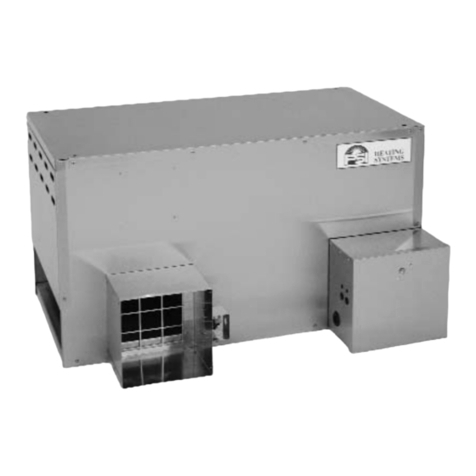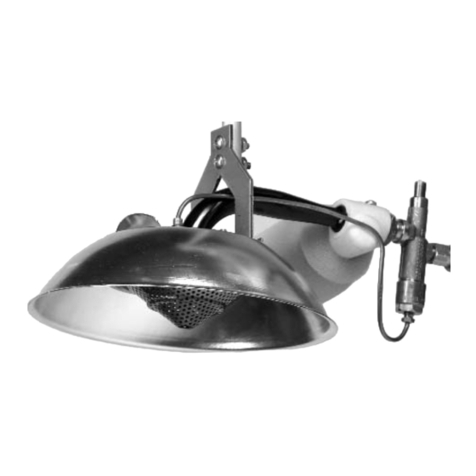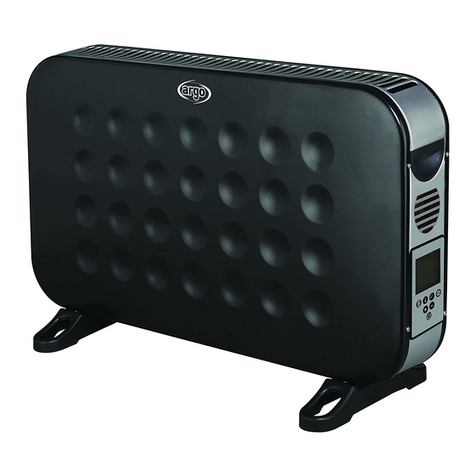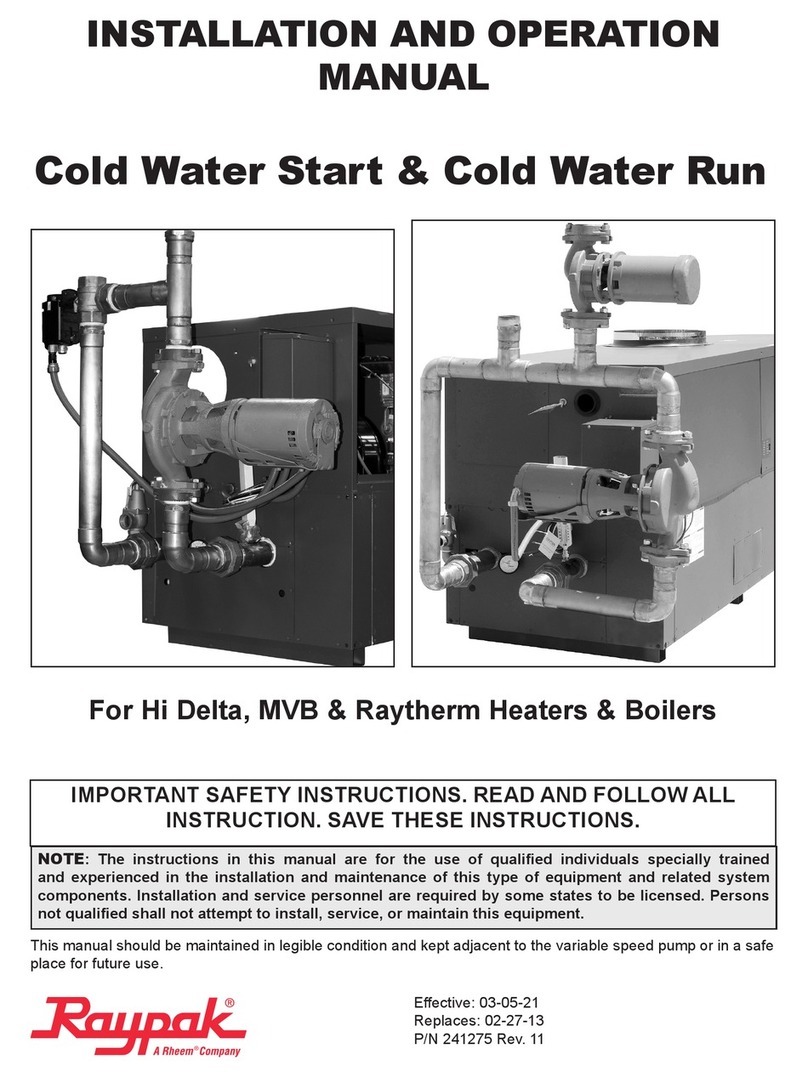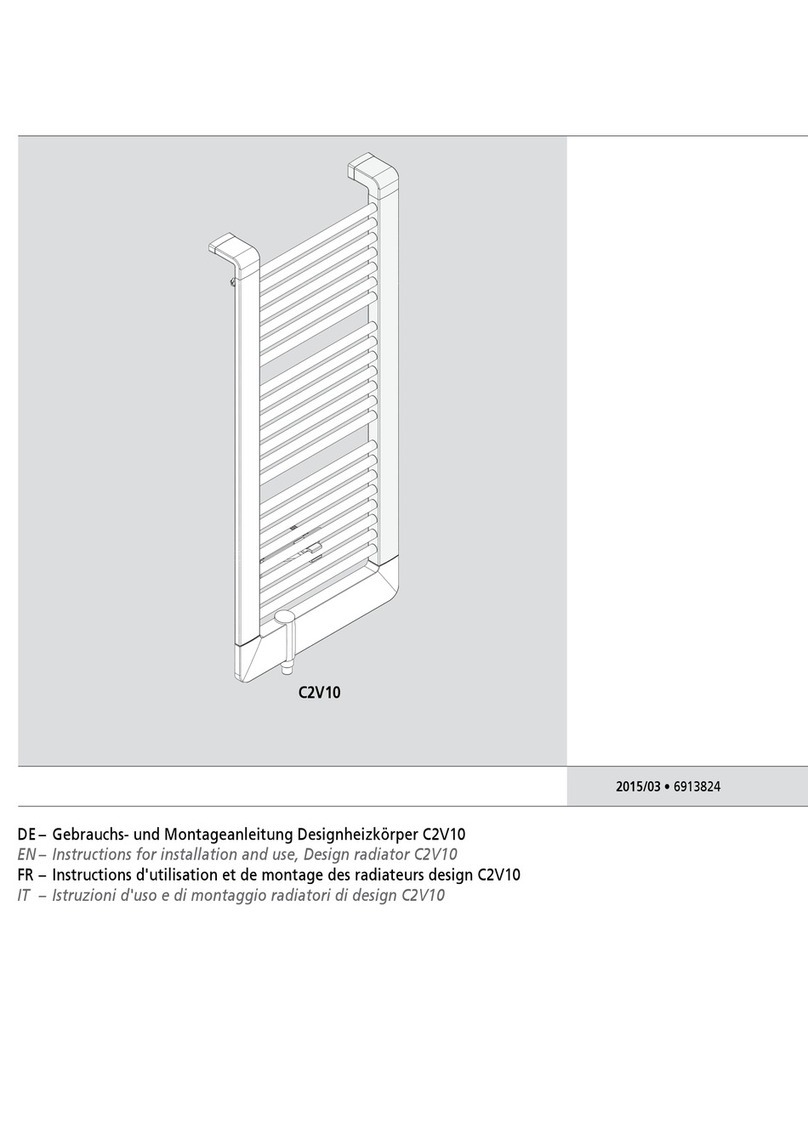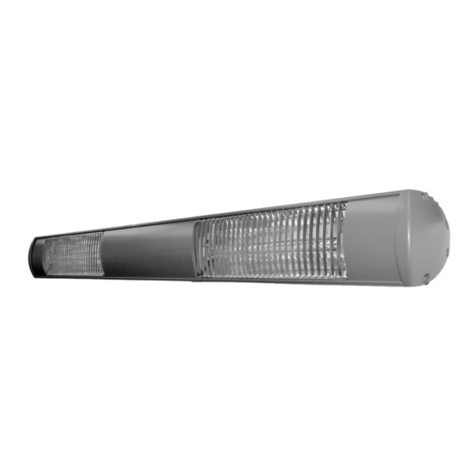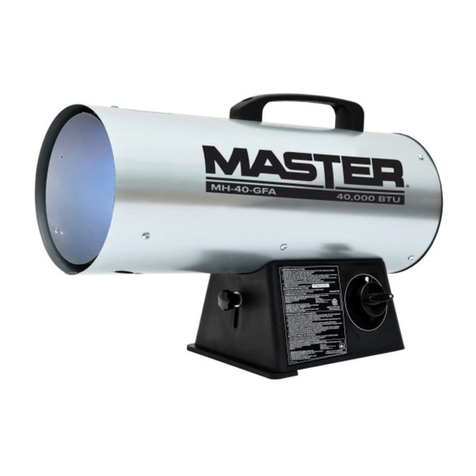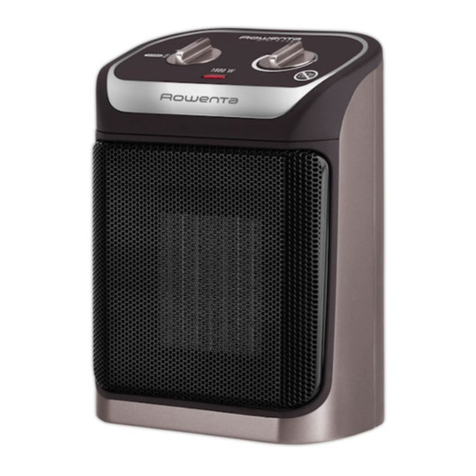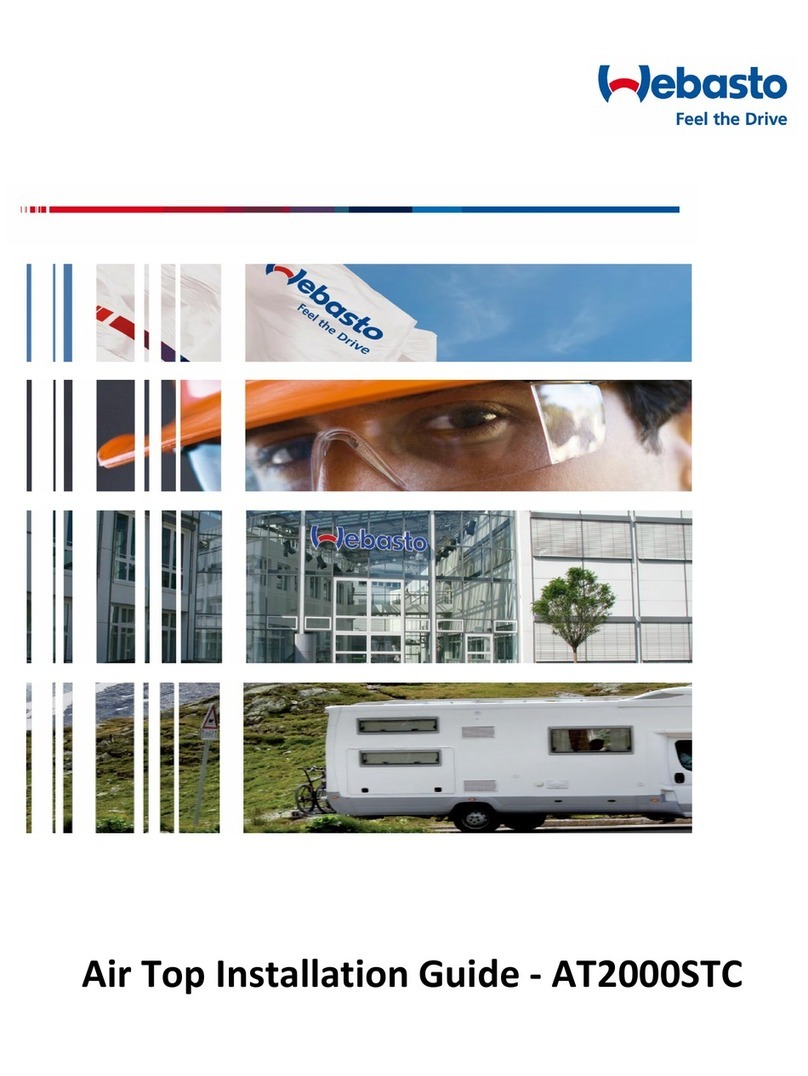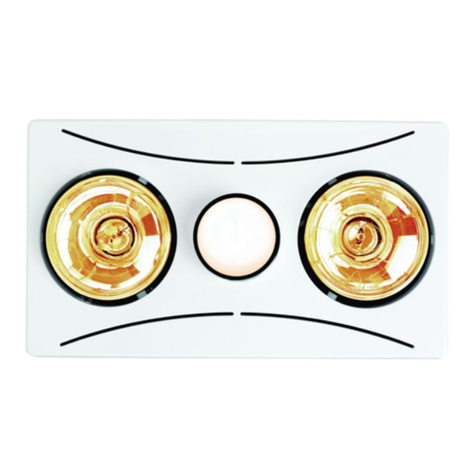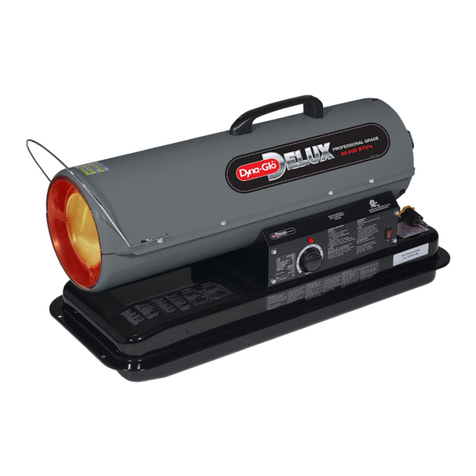PSI 1450 Series Manual

17.6
1450 Direct Spark
65.9
IGNITION OUTPUT
SERIES TYPE (kW) FUEL
Models are
available in
either Propane
Vapor Withdrawal
or Natural Gas
Configurations.
Congratulations!
You have purchased the finest agricultural building heater available.
Your new PSI heater incorporates the benefits from the most experienced
manufacturer of heating products using state-of-the-art technology.
We, at PSI, thank you for your confidence in our products and welcome
any suggestions or comments you may have...call us at: USA 01-608-781-8500.
ATTENTION ALL USERS
This heater has been designed and developed specifically for use as a direct-fired
circulating heater for agricultural animal confinement buildings. The heater has
been evaluated by BG Technology and found to conform to essential health and
safety requirements as required by the Gas Appliance Directive, Low Voltage
Directive, and Electromagnetic directive. The heater is approved for indoor use or
outdoor use with the approved air handling kit. If you are considering using this
product for any application other than its intended use, then please contact your
fuel gas supplier, or PSI Heating Systems.
F150-81033-B
W6636 East Avenue North, Onalaska, WI USA ■(608) 781-8500 ■Fax: (608) 783-6115
Owner's Manual and Instructions
Agricultural Animal Confinement Building Heaters

WARNING
Fire and Explosion Hazard
■Not for home or recreational vehicle use.
■Installation of this heater in a home or
recreational vehicle may result in a fire or
explosion.
■Fire or explosions can cause property
damage or loss of life.
FOR YOUR SAFETY
If you smell gas:
1. Open windows.
2. Don't touch electrical switches.
3. Extinguish any open flame.
4. Immediately call your gas supplier.
FOR YOUR SAFETY
Do not store or use gasoline or other
flammable vapors and liquids in the vicinity
of this or any other appliance.
WARNING
Fire and Explosion Hazard
■Keep solid combustibles a safe distance
away from the heater.
■Solid combustibles include wood or paper
products, feathers, straw, and dust.
■Do not use the heater in spaces which
contain or may contain volatile or airborne
combustibles.
■Volatile or airborne combustibles include
gasoline, solvents, paint thinner, dust
particles or unknown chemicals.
■Failure to follow these instructions may
result in a fire or explosion.
■Fire or explosions can lead to property
damage, personal injury or loss of life.
GENERAL HAZARD WARNING
■Failure to comply with the precautions and instructions provided with this heater, can result
in:
— Death
— Serious bodily injury or burns
— Property damage or loss from fire or explosion
— Asphyxiation due to lack of adequate air supply or carbon monoxide poisoning
— Electrical shock
■Read this Owner’s Manual before installing or using this product.
■Only properly-trained service people should repair or install this heater.
■Save this Owner’s Manual for future use and reference.
■Owner’s Manuals and replacement labels are available at no charge. For assistance, contact
PSI at +1-608-781-8500.
WARNING
■Proper gas supply pressure must be provided to the inlet of the heater.
■Refer to rating plate for proper gas supply pressure.
■Gas pressure in excess of the maximum inlet pressure specified at the heater inlet can cause
fires or explosions.
■Fires or explosions can lead to serious injury, death, building damage or loss of livestock.
■Gas pressure below the minimum inlet pressure specified at the heater inlet may cause
improper combustion.
■Improper combustion can lead to asphyxiation or carbon monoxide poisoning and therefore
serious injury or death to humans and livestock.
2

This Owner's Manual includes all options and accessories
commonly used on this heater. However, depending on the
configuration purchased, some options and accessories may
not be included.
When calling for technical service assistance, or for other
specific information, always have model number,
configuration number and serial number available. This
information is contained on the dataplate. The dataplate is
located on the exterior of the case assembly on the blower
outlet side of the heater.
This manual will instruct you in the operation and care of
your unit. Have your qualified installer review this manual
with you so that you fully understand the heater and how it
functions.
The gas supply line installation, installation of the heater,
and repair and servicing of the heater requires continuing
expert training and knowledge of gas heaters and should not
be attempted by anyone who is not so qualified. See page 6
for definition of the necessary qualifications.
The life expectancy of this product is 10 years, when
properly installed, serviced, maintained and operated in
accordance with the instructions and information provided in
this manual.
Contact your local PSI distributor or PSI Heating Systems for
assistance, or if you have any questions about the use of the
equipment or its application.
PSI Heating Systems has a policy of continuous product
improvement. It reserves the right to change specifications
and design without notice.
SECTION PAGE
General Information . . . . . . . . . . . . . . . . . . . . . . . . . . . . . . . . . . . . . . . . . . . . . . . . . . . . . . . . . . . . . . . . . . .3
Heater Specifications . . . . . . . . . . . . . . . . . . . . . . . . . . . . . . . . . . . . . . . . . . . . . . . . . . . . . . . . . . . . . . . . .4
Fuel Information for Country of Destination . . . . . . . . . . . . . . . . . . . . . . . . . . . . . . . . . . . . . . . . . . . .5
Safety Precautions . . . . . . . . . . . . . . . . . . . . . . . . . . . . . . . . . . . . . . . . . . . . . . . . . . . . . . . . . . . . . . . . . . . .6
Installation Instructions
General . . . . . . . . . . . . . . . . . . . . . . . . . . . . . . . . . . . . . . . . . . . . . . . . . . . . . . . . . . . . . . . . . . . . . . . . .8
Air Diverter Installation Instructions . . . . . . . . . . . . . . . . . . . . . . . . . . . . . . . . . . . . . . . . . . . . . . . . . .9
Hanging Instructions . . . . . . . . . . . . . . . . . . . . . . . . . . . . . . . . . . . . . . . . . . . . . . . . . . . . . . . . . . . . . .10
Sediment Trap Assembly . . . . . . . . . . . . . . . . . . . . . . . . . . . . . . . . . . . . . . . . . . . . . . . . . . . . . . . . . .10
Thermostat Installation . . . . . . . . . . . . . . . . . . . . . . . . . . . . . . . . . . . . . . . . . . . . . . . . . . . . . . . . . . .11
Manual Shut-Off Valve, Hose and Regulator Assembly . . . . . . . . . . . . . . . . . . . . . . . . . . . . . . . . . .11
Start-Up Instructions . . . . . . . . . . . . . . . . . . . . . . . . . . . . . . . . . . . . . . . . . . . . . . . . . . . . . . . . . . . . . . . . .12
Shut-Down Instructions . . . . . . . . . . . . . . . . . . . . . . . . . . . . . . . . . . . . . . . . . . . . . . . . . . . . . . . . . . . . . . .12
Cleaning Instructions . . . . . . . . . . . . . . . . . . . . . . . . . . . . . . . . . . . . . . . . . . . . . . . . . . . . . . . . . . . . . . . . .13
Maintenance Instructions . . . . . . . . . . . . . . . . . . . . . . . . . . . . . . . . . . . . . . . . . . . . . . . . . . . . . . . . . . . . .13
Service Instructions
Motor and Fan Wheel Assembly . . . . . . . . . . . . . . . . . . . . . . . . . . . . . . . . . . . . . . . . . . . . . . . . . . . .14
Air Proving Switch with Paddle . . . . . . . . . . . . . . . . . . . . . . . . . . . . . . . . . . . . . . . . . . . . . . . . . . . . . .14
Igniter and Flame Sensor . . . . . . . . . . . . . . . . . . . . . . . . . . . . . . . . . . . . . . . . . . . . . . . . . . . . . . . . . .15
Replacing Gas Control Valve . . . . . . . . . . . . . . . . . . . . . . . . . . . . . . . . . . . . . . . . . . . . . . . . . . . . . . .15
Gas Pressure Checks . . . . . . . . . . . . . . . . . . . . . . . . . . . . . . . . . . . . . . . . . . . . . . . . . . . . . . . . . . . . .16
Testing the Manual Reset High Limit Switch . . . . . . . . . . . . . . . . . . . . . . . . . . . . . . . . . . . . . . . . . .17
Troubleshooting Guide . . . . . . . . . . . . . . . . . . . . . . . . . . . . . . . . . . . . . . . . . . . . . . . . . . . . . . . . . . . . . . .18
Electrical Connection and Ladder Diagram
17.6 kW Model . . . . . . . . . . . . . . . . . . . . . . . . . . . . . . . . . . . . . . . . . . . . . . . . . . . . . . . . . . . . . . . . . .23
65.9 kW Model . . . . . . . . . . . . . . . . . . . . . . . . . . . . . . . . . . . . . . . . . . . . . . . . . . . . . . . . . . . . . . . . . .24
Heater Component Function . . . . . . . . . . . . . . . . . . . . . . . . . . . . . . . . . . . . . . . . . . . . . . . . . . . . . . . . . . .25
Parts Identification
Parts Schematic . . . . . . . . . . . . . . . . . . . . . . . . . . . . . . . . . . . . . . . . . . . . . . . . . . . . . . . . . . . . . . . . .26
Parts List . . . . . . . . . . . . . . . . . . . . . . . . . . . . . . . . . . . . . . . . . . . . . . . . . . . . . . . . . . . . . . . . . . . . . . .27
Label Identification . . . . . . . . . . . . . . . . . . . . . . . . . . . . . . . . . . . . . . . . . . . . . . . . . . . . . . . . . . . . . . . . . .28
Warranty Policy . . . . . . . . . . . . . . . . . . . . . . . . . . . . . . . . . . . . . . . . . . . . . . . . . . . . . . . . . . . . . . . . . . . . .29
Replacement Parts and Service . . . . . . . . . . . . . . . . . . . . . . . . . . . . . . . . . . . . . . . . . . . . . . . . . . . . . . . .29
Table of Contents
General Information
3

60 225
17.6 65.9
429 1543
25 I 3P
20 I 3B/P
10 I 2H, I 2E, and I 2E(S)B,
12 I 2L
10/12 I 2Er
Ball Bearing
49.7 Watts 249 Watts
1450 RPM 1100 RPM
220-240/50/1
1.2 5.0
0.4 1.7
74 x 32 x 29 98 x 47 x 42
TOP 0.3 m
SIDES 0.3 m
BACK 0.3 m
BLOWER
OUTLET
GAS L.P. Gas Supply — 1.83 m
SUPPLY Natural Gas Supply — N/A
SSPPEECCIIFFIICCAATTIIOONNSS
Models
Ventilation Air Required
to Support Combustion (m3/hr)
Maximum Input (kW)
Electrical Supply
(Volts/Hz/Phase)
Amp Draw
Dimensions
L x W x H (cm)
Minimum Safe
Distances From
Nearest
Combustible
Materials
STARTING
CONTINUOUS
OPERATION
Motor Characteristics
Burner Manifold Pressure
Relative to Gas Category
For Regulated Units (mbar)
3.0 m
4
Heater Specifications
PROPANE GAS
BUTANE /PROPANE GAS
NATURAL GAS

5
CY, CZ, DK, EE, FI,
GR, HU, IT, LT, LV,
MT, NO & SE
I3P (37)
I3B/P (30)
Destination Countries Gas Category & Pressure
(mbar)
Propane
HU & NL I3P (30)
PL I3P (36)
BE, CH, CZ, ES, 1.26 4.73
GB, IE, PT, SI & SK
BE, CH, DE, ES & NL I3P (50)
(Butane) (Butane)
1.28 4.80
(Propane) (Propane)
1.26 4.73
I2H (20)
Destination Countries Gas Category & Pressure
(mbar)
Natural Gas
AT, CH, CZ, DK, EE, ES, FI,
GB, GR, IE, IT, LT, LV, NO, PT
SE, SI, SK & TR
DE, LU & PL I2E (20)
BE I2E(S)B (20)
NL I2L (25) 2.02 7.44
1.74 6.43
FUEL INFORMATION FOR COUNTRY OF DESTINATION
Rate (kg/hour)
60 225
Rate (m3/hour)
60 225

LP ggas aand nnatural ggas hhave mman-mmade oodorants aadded sspecifically ffor ddetection oofffuel ggas lleaks.
If aaggas lleak ooccurs, yyou sshould bbeaable ttossmell tthe ffuel ggas.
THAT’S YYOUR SSIGNAL TTOGGOIINTO IIMMEDIATE AACTION!
■Do not take any action that could ignite the fuel gas. Do
not operate any electrical switches. Do not pull any
power supply or extension cords. Do not light matches
or any other source of flame. Do not use your telephone.
■Get everyone out of the building and away from the area
immediately.
■Close all propane (LP) gas tank or cylinder fuel supply
valves, or the main fuel supply valve located at the meter
if you use natural gas.
■Propane (LP) gas is heavier than air and may settle in low
areas. When you have reason to suspect a propane
leak, keep out of all low areas.
■Natural gas is lighter than air and can collect around
rafters or ceilings.
■Use your neighbor’s phone and call your fuel gas
supplier and your fire department. Do not re-enter the
building or area.
■Stay out of the building and away from the area until
declared safe by the firefighters and your fuel gas
supplier.
■FINALLY, let the fuel gas service person and the
firefighters check for escaped gas. Have them air out
the building and area before you return. Properly trained
service people must repair the leak, check for further
leakages, and then relight the appliance for you.
WWAARRNNIINNGG
■Do not use this heater for heating human living quarters.
■Do not use in unventilated areas.
■The flow of combustion and ventilation air must not be
obstructed.
■Proper ventilation air must be provided to support the
combustion air requirements of the heater being used.
■Refer to the specification section of the heater’s Owner’s
Manual, heater dataplate, or contact PSI Heating
Systems to determine combustion air ventilation
requirements of the heater.
■Lack of proper ventilation air will lead to improper
combustion.
■Improper combustion can lead to carbon monoxide
poisoning in humans leading to serious injury or death.
Symptoms of carbon monoxide poisoning can include
headaches, dizziness and difficulty in breathing.
■Symptoms of improper combustion affecting livestock
can be disease, lower feed conversion, or death.
Asphyxiation Hazard
■Some ppeople ccannot ssmell wwell. SSome ppeople ccannot
smell tthe oodor ooftthe mman-mmade cchemical aadded tto
propane ((LP) oornnatural ggas. YYou mmust ddetermine iifyyou
can ssmell tthe oodorant iintthese ffuel ggases.
■Learn to recognize the odor of propane (LP) gas and
natural gas. Local propane (LP) gas dealers and your
local natural gas supplier (utility) will be more than
happy to give you a “scratch and sniff” pamphlet. Use it
to become familiar with the fuel gas odor.
■Smoking can decrease your ability to smell. Being
around an odor for a period of time can affect your
sensitivity to that particular odor. Odors present in
animal confinement buildings can mask fuel gas odor.
■The oodorant iinppropane ((LP) ggas aand nnatural ggas iis
colorless aand tthe iintensity oofiits oodor ccan ffade uunder
some ccircumstances.
■If there is an underground leak, the movement of gas
through the soil can filter the odorant.
■Propane (LP) gas odor may differ in intensity at different
levels. Since propane (LP) gas is heavier than air, there
may be more odor at lower levels.
■Always bbessensitive ttotthe sslightest ggas oodor. If you
continue to detect any gas odor, no matter how small,
treat it as a serious leak. Immediately go into action as
discussed previously.
6
Safety Precautions
FUEL GAS ODOR
ODOR FADING -- NO ODOR DETECTED
ATTENTION -- CRITICAL POINTS TO REMEMBER!
■Propane (LP) gas and natural gas have a distinctive odor.
Learn to recognize these odors. (Reference “Fuel Gas
Odor” and “Odor Fading” sections above.
■
If you have not been properly trained in repair and service
of propane (LP) gas and natural gas fueled heaters, then
do not attempt to light heater, perform service or repairs,
or make any adjustments to the heater on propane (LP)
gas or natural gas fuel system.
■Even if you are not properly trained in the service and
repair of the heater, ALWAYS be consciously aware of the
odors of propane (LP) gas and natural gas.
■A periodic “sniff test” around the heater or at the
heater’s joints; i.e. hose, connections, etc., is a good
safety practice under any conditions. If you smell even a
small amount of gas, CONTACT YOUR FUEL GAS
SUPPLIER IMMEDIATELY. DO NOT WAIT!

1. Do not attempt to install, repair, or service this heater
or the gas supply line unless you have continuing
expert training and knowledge of gas heaters.
Qualifications for service and installation of this
equipment are as follows:
a.
To be a qualified gas heater service person, you
must have sufficient training and experience to
handle all aspects of gas-fired heater installation,
service and repair. This includes the task of
installation, troubleshooting, replacement of
defective parts and testing of the heater. You must
be able to place the heater into a continuing safe
and normal operating condition. You must
completely familiarize yourself with each model
heater by reading and complying with the safety
instructions, labels, Owner’s Manual, etc., that is
provided with each heater.
b.
To be a qualified gas installation person, you must
have sufficient training and experience to handle
all aspects of installing, repairing and altering gas
lines, including selecting and installing the proper
equipment, and selecting proper pipe and tank
size to be used. This must be done in accordance
with all local, state and national codes as well as
the manufacturer’s requirements.
2. All installations and applications of PSI heaters must
meet all relevant local, state and national codes.
Included are L.P. gas, natural gas, electrical, and
safety codes. Your local fuel gas supplier, a local
licensed electrician, the local fire department or
similar government agencies, or your insurance agent
can help you determine code requirements.
3. Do not move, handle, or service heater while in
operation or connected to a power or fuel supply.
4. This heater may be installed in areas subject to
washdown. This heater may only be washed on the
external case assembly — see Cleaning Instructions.
Do not wash the interior of the heater. Use only
compressed air, soft brush or dry cloth to clean the
interior of the heater and it’s components. After
external washdown, do not operate this heater until it
is completely dry. In any event, do not operate the
heater for at least one hour after external washdown.
5. For safety, this heater is equipped with a manual reset
high-limit switch and an air flow switch. Never operate
this heater with any safety device that has been
bypassed. Do not operate this heater unless all of
these features are fully functioning.
6. Do not operate the heater with its door open or panel
removed.
7. Do not locate fuel gas containers or fuel supply hoses
within 6.10 meters of the blower outlet of the heater.
8. Do not block air intakes or discharge outlets of the
heater. Doing so may cause improper combustion or
damage to heater components leading to property
damage or animal loss.
9. The hose assembly shall be visually inspected on an
annual basis. If it is evident there is excessive
abrasion or wear, or if the hose is cut, it must be
replaced prior to the heater being put into operation.
The hose assembly shall be protected from animals,
building materials, and contact with hot surfaces
during use. The hose assembly shall be that specified
by the manufacturer. See parts list.
10. Check for gas leaks and proper function upon heater
installation, before building repopulation or when
relocating.
11. This heater should be inspected for proper operation
by a qualified service person before building
repopulation and at least annually.
12. Always turn off the gas supply to the appliance if the
appliance is not going to be used in the heating of
livestock.
13. This heater is wired for a three-wire electrical system.
There is a hot lead, neutral lead, and a ground lead.
The heater may or may not incorporate a plug in the
power cord on the heater and the plug may or may not
incorporate a pin for the ground wire. In any case, the
heater must be properly connected into a grounded
electrical supply using the ground lead in the power
cord. Failure to use a properly grounded electrical
supply can result in electrical shock, personal injury,
or death.
14. Direct spark ignition heaters will make up to three
trials for ignition. If ignition is not achieved after the
third trial, the control system will lock out the gas
control valve. If gas is smelled after sytem lockout has
occurred, immediately close all fuel supply valves.Do
not relight until you are sure that all gas has cleared
away. In any event, do not relight for at least 5
minutes.
15. In a hanging type installation, rigid pipe or copper
tubing coupled directly to the heater may cause gas
leaks during movement, and therefore must not be
used. Use only gas hose assemblies that are rated
and approved for L.P. gas and natural gas in a hanging
type of installation.
16. Installations not using the gas hose supplied with this
appliance must connect dimensionally using BS1387
Medium Duty Galvanized Steel Tube. (Aluminum
piping or tubing shall not be used.) Copper tubing
when used for conveying natural gas, shall be
internally tinned or equivalently treated to resist
sulphur.
7

1. Read all safety precautions and follow PSI
recommendations when installing this heater. If
during the installation or relocating of heater, you
suspect that a part is damaged or defective, call a
qualified service agency for repair or replacement.
2. Make sure the heater is properly positioned before
use and is hung level. Observe and obey all minimum
safe distances of the heater to the nearest
combustible materials. Minimum safe distances are
given on the heater nameplate and on page 4 of this
manual.
3. The heater is approved for either indoor or outdoor
use. When the heater is mounted outdoors, use only
the approved air handling kit.
4. For heaters intended for outdoor installation, the
heater is to be installed at least 50 cm above the
ground or to a height that would prevent snow
blockage of heater’s air inlet.
5. The heater’s gas regulator (with pressure relief valve)
should be installed outside of building. Any regulators
inside the buildings must be properly vented to the
outside. Local, state and national codes always apply
to regulator installation. Natural gas regulators with
vent limiting device may be mounted indoors without
venting to outdoors.
6. Insure that all accessories that ship within the heater
have been removed from inside of heater and
installed. This pertains to air diverters, hose,
regulators, etc.
7. Make certain that a sediment trap is installed at the
gas valve inlet to prevent foreign materials (pipe
compound, pipe chips and scale) from entering the
gas valve. Debris blown into the gas valve may cause
that valve to malfunction resulting in a serious gas
leak that could result in a possible fire or explosion
causing loss of products, building or even life. A
properly installed sediment trap will keep foreign
materials from entering the gas valve and protect the
safe functioning of that important safety component.
8. Any heater connected to a piping system must have an
accessible, approved manual shut off valve installed
within 1.83 meters of the heater it serves.
9. Check all connections for gas leaks using approved
gas leak detectors. Gas leak testing is performed as
follows: Check all pipe connections, hose
connections, fittings and adapters upstream of the
gas control with approved gas leak detectors. In the
event a gas leak is detected, check the components
involved for cleanliness and proper application of pipe
compound before further tightening. Further tighten
the gas connections as necessary to stop the leak.
After all connections are checked and any leaks are
stopped, turn on the main burner. Stand clear while
the main burner ignites to prevent injury caused from
hidden leaks that could cause flashback. With the
main burner in operation, check all connections, hose
connections, fittings and joints as well as the gas
control valve inlet and outlet connections with
approved gas leak detectors. If a leak is detected,
check the components involved for cleanliness in the
thread areas and proper application of pipe
compound before further tightening. Further tighten
the gas connection as necessary to stop the leak. If
necessary, replace the parts or components involved
if the leak cannot be stopped. Ensure all gas leaks
have been identified and repaired before proceeding.
10. A qualified service agency must check for proper
operating gas pressure upon installation of the heater.
11. Light according to instructions on heater or within
owner's manual.
12. It is extremely important to use the proper size and
type of gas supply line to assure proper functioning of
the heater. Contact your fuel gas supplier for proper
line sizing and installation.
Installation Instructions
GENERAL
WARNING
Fire oorEExplosion HHazard.
Can ccause pproperty ddamage, ssevere iinjury oorddeath.
1. Disconnect power supply before wiring to prevent
electrical shock or equipment damage.
2. To avoid dangerous accumulation of fuel gas, turn
off gas supply at the appliance service valve before
starting installation, and perform gas leak test after
completion of installation.
3. Do not force the gas control knob. Use only your
hand to turn the gas control knob. Never use any
tools. If the knob will not operate by hand, the
control should be replaced by a qualified service
technician. Force or attempted repair may result in
fire or explosion.
WARNING
Fire aand EExplosion HHazard
■Do not use open flame (matches, torches, candles,
etc.) in checking for gas leaks.
■Use only approved leak detectors.
■Failure to follow this warning can lead to fires or
explosions.
■Fires or explosions can lead to property damage,
personal injury or loss of life.
8

13. Make sure the heater has the proper gas regulator for
the application. A regulator must be connected to the
gas supply so that gas pressure at the inlet to the gas
valve is regulated within the range specified on the
dataplate at all times. Contact your gas supplier, or
PSI Heating Systems if you have any questions.
14. This heater can be configured for use with either L.P.
gas vapor withdrawal or natural gas. Consult the
dataplate, located on interior of the burner end or
motor end door, for the gas configuration of the
specific heater. Do not use the heater in an L.P. gas
liquid withdrawal system or application. If you are in
doubt, contact PSI Heating Systems.
15. Eventually, like all electrical/mechanical devices, the
thermostat can fail. Thermostat failure may result in
either an underheating or overheating condition which
may damage critical products and/or cause animal
injury or death. Critical products and/or animals
should be protected by a separate back-up control
system that limits high and low temperatures and also
activates appropriate alarms.
16. Take time to understand how to operate and maintain
the heater by using this Owner’s Manual. Make sure
you know how to shut off the gas supply to the building
and also to the individual heater. Contact your fuel
gas supplier if you have any questions.
17. Any defects found in performing any of the service or
maintenance procedures must be eliminated and
defective parts replaced immediately. The heater
must be retested by properly qualified service
personnel before placing the heater back into use.
9
(Appearance of the outlet on heater may vary from model to model.)
AIR DIVERTER
INSTALLATION INSTRUCTIONS
1. Air diverters can be installed in the heater outlet to
provide direction to the heated air as it exits the
heater. Refer to Fig.1. Air diverters for 65,9 kW heaters
can be installed to direct the air in either two 45
degree paths or in one 45 degree direction. The air
diverter kit for the 17,6 kW heater must only be
installed for direction in two 45 degree paths.
2. The air diverter’s tabs on each half will pop into the
blower outlet between the inside of the case assembly
and the blower housing outlet. If the notched tabs do
not pop into the blower outlet, loosen (do not remove)
the blower outlet screws. Doing this provides a gap
into which you can insert the tabs. Retighten the
screws after installation.
3. The air diverters require hand forming prior to
installation. Make 90 degree bends utilizing the
perforations provided. The diverter halves should
then have the shape as shown in Fig. 1.
FIG. 1 (Typical installation allowing two directions of air movement.)
TABS
DIVERTER
HALVES
OUTLET
SCREWS
FORMED
OUTLET GUARD
NOTCHES IN MOUNTING TABS
DIVERTER ARRANGEMENT
17.6 KW MODEL
DIVERTER ARRANGEMENT
65.9 KW MODEL ONLY
ALTERNATE AIR DIVERTER ARRANGEMENTS
65,9 kW HEATER ONLY
DIVERTER ARRANGEMENT
17,6 kW HEATER

HANGING INSTRUCTIONS
10
OPTIONAL INDOOR
REGULATOR
MOUNTING LOCATION
GAS HOSE
THERMOSTAT
CORD
YOKE
HEATER
THERMOSTAT 30.5CM 30.5CM
BLACK PIPE
THROUGH WALL
VENT LINE
WALL OUTLET
POWER CORD
SEDIMENT
TRAP
WALL
CHAIN OR CABLE
EYEBOLT
NUT
FLAT WASHER
CAGE NUT
CHAIN
CASE TOP
1. Assemble according to the illustration and tighten all
eyebolts securely.
FIG. 2
2. Be sure heater is securely fastened and is hanging
level. (Check crosswise and lengthwise.)
3. See Fig. 3 for typical indoor installation. In any animal
confinement building, consideration must be given to
making sure the heater is located away from the
livestock so that livestock cannot knock the heater,
tear it loose from its mounting, or damage the heater
or its gas supply line in any way. Make sure you
observe and obey minimum clearance distances to
combustible materials as stated in the specification
section of this owner’s manual and on the heater
itself.
FIG. 3
SEDIMENT TRAP ASSEMBLY
NIPPLE
HOSE ADAPTER
TEE
NIPPLE
CAP
TO GAS CONTROL
VALVE INLET
Assemble the tee, nipples and cap together and tighten
securely. The sediment trap assembly must always be
mounted in a vertical position. Make sure pipe thread
compound that is resistant to both L.P. gas and natural gas
is used in making all connections. Check aall cconnections ffor
gas lleaks uusing aapproved ggas lleak ddetectors.
FIG. 4
,3M ,3M
WALL

11
MANUAL SHUT-OFF VALVE, HOSE
AND REGULATOR ASSEMBLY
To CConnect tthe DDirect WWired TThermostat KKit ttotthe CControl
Box oontthe HHeater:
a. The installation and wiring of a thermostat must
be done by an electrician or someone properly
qualified.
b. The thermostat cordset must use a minimum of
18 gauge wire consisting of a hot lead, neutral
lead, and a ground lead.
c. Follow all instructions provided with the
thermostat kit.
d. The heater must be tested for proper operation
after the thermostat has been connected.
WARNING
Electrical SShock HHazard
■Disconnect the electrical supply before connecting the
thermostat to the heater.
■Failure to follow this warning can result in electrical
shock, leading to personal injury or death.
THERMOSTAT INSTALLATION
REGULATOR VENT
PIPING ADAPTER
VALVE, MANUAL
SHUT-OFF
NIPPLE 1/2"
REGULATOR
PIPING ADAPTER
ADAPTER
GAS HOSE
ADAPTER
SEDIMENT TRAP
TO GAS CONTROL
VALVE INLET
GAS FLOW
1. Always use approved pipe thread compound suitable
for use with L.P. gas and natural gas on the threaded
connections.
2. Assemble the components together according to the
figure. This view is to show general assembly of the
components only. The regulator must always be
mounted so its vent, regardless of location on the
regulator, is always pointed downward.
3. Tighten all connections securely.
4. Check aall cconnections ffor ggas lleaks uusing aapproved
gas lleak ddetectors.
FIG. 5

If the heater is to be shut down for cleaning, maintenance or
repair, follow steps 1 - 5. Otherwise, simply turn thermostat
to “Off” or “No Heat” for standard shut down.
1. Close all manual fuel supply valves.
2. With the heater lit, allow heater to burn off excess fuel
in gas supply hose.
3. Turn the indicator on the gas control to Off.
4. Turn thermostat to Off or No Heat position.
5. Disconnect the heater from the electrical supply.
Shut-Down Instructions
12
Follow steps 1 - 6 on initial start-up after heater installation
by a qualified service person. For normal start-up, simply set
the thermostat to a setting above room temperature.
1. Open all manual fuel supply valves and check for gas
leaks using approved leak detectors.
2. The gas control valve has a manual shut-off feature
incorporated into the valve assembly. Make sure the
indicator on the control valve is positioned to On.
FIG. 6
3. This heater includes a direct spark ignition (DSI)
control module for purposes of controlling the timing
of the ignition process of the heater as well as
monitoring of the safety functions. The DSI module is
located in the control box assembly. Refer to the
troubleshooting guide within this Owner’s Manual.
Only qualified and properly-trained personnel shall
service or repair the heater.
4. On a call for heat, the motor will start up and run for
five (5) seconds prior to ignition trial. This pre-purge
is a safety feature and a normal operational
characteristic. After five (5) seconds the igniter will
spark until burner flame is detected by the control
module.
5. The ignition control will make three trials for ignition.
If ignition is not proven after the third trial, the control
will lock-out the heater. The ignition control must be
reset to restart the heater. Push and release the reset
switch located on the control box. See Fig. 7.
NOTE: It is normal for air to be trapped in the gas
hose on new installations. You may have to attempt
more than one trial for ignition before the air is finally
purged from the line and ignition takes place.
FIG. 7
6. Do not exceed the input rating stated on the dataplate
of the heater. Do not exceed the burner manifold
pressure stated on the dataplate. Do not use an
orifice size different than specified for the specific
input rating of this heater, fuel type configuration and
altitude.
Start-Up Instructions
ON
OFF
RESET SWITCH
RESET SWITCH
(PUSH AND RELEASE TO RESET)
FUSE

1. Have your gas supplier check all gas piping annually
for leaks or restrictions in gas lines. Also, at this time
have your gas supplier clean out the sediment trap of
any debris that may have accumulated.
2. The aappliance aarea sshall bbekkept cclear aand ffree ffrom
combustible mmaterials, ggasoline, aand oother fflammable
vapors aand lliquids.
3. Review all heater markings prior to use. Markings
constitute information relating to warnings, start-up,
shut-down instructions, etc. Make sure all markings
are legible and not cut, torn, or otherwise damaged.
Any damaged markings should be replaced
immediately. Markings are available at no cost by
contacting PSI.
4. Regulators can wear out and function improperly.
Have your gas supplier check the date codes on all
regulators installed and check delivery pressures to
the appliance to make sure that the regulator is
reliable.
5. Regulators must be periodically inspected to make
sure the regulator vents are not blocked. Debris,
insects, insect nests, snow, or ice on a regulator can
block vents and cause excess pressure at the
appliance.
1. Before cleaning, shut off all gas supply valves and
disconnect electrical supply.
2. The heater should have dirt or dust removed
periodically:
a. After each flock or between building re-population,
give the heater a general cleaning using
compressed air or a soft brush on its interior and
exterior. At this time, dust off the motor case to
prevent
the motor from over-heating and shutting
the heater down.
b. At least once a year, give the heater a thorough
cleaning. At this time, remove the fan and motor
assembly and brush or blow off the fan wheel,
giving attention to the individual fan blades.
Additionally, make sure the burner air inlet venturi
ports and the “throat” of the casting are free of
dust accumulation and the area between the heat
chamber top and inside case is also free of dust.
c. When washing with water, observe and obey the
Warning within these Cleaning Instructions. This
same Warning is also supplied on the heater.
WARNING
This heater may be washed only on the external case
assembly provided:
A. The heater is disconnected from the electrical supply.
B. All access panels are securely closed.
C. Water spray nozzle shall not discharge within 1.83 m
of the heater.
D. The water pressure does not exceed 3.1 BAR for 10
seconds on each side of heater.
E. The heater is not reconnected to electrical supply for
a minimum of 1 hour or until the heater is thoroughly
dry.
Improper cleaning of the heater can cause severe
personal injury or property damage due to water and/or
cleaning solution:
1. In electrical components, connections and wires
causing electrical shock or component failure.
2. On gas control components causing corrosion which
can result in gas leaks and fire or explosion from the
leak.
Clean internal components of the heater with a soft, dry
brush or cloth, or compressed air.
13
Cleaning Instructions
Maintenance Instructions
WARNING
Fire, BBurn, aand EExplosion HHazard
■This heater contains electrical and mechanical components in the gas management, safety and airflow systems.
■Such components may become inoperative or fail due to dust, dirt, wear, aging, or the corrosive atmosphere of
an animal confinement building.
■Periodic cleaning and inspection as well as proper maintenance are essential to avoid serious injury or property
damage.

Service Instructions
1. Shut off the gas supply to the heater.
2. Disconnect the heater from its electrical supply.
3. Open the case access panel on the motor end of the
heater.
4. Disconnect the motor leads.
5. Remove the screws securing the motor mounting plate
to the fan housing.
6. Pull the fan and motor assembly from the housing.
7. Loosen the set screw(s) on the fan wheel with a
wrench.
8. Pull the fan wheel from the motor shaft. Use a wheel
puller if necessary.
9. Remove the four (4) nuts securing the motor to the
mounting plate.
10. To replace the motor and fan, reverse the above
procedures.
NOTES: a. Fan wheel to motor mount plate spacing
must be adjusted to the clearances
specified in the table below before
tightening the fan wheel to the motor shaft.
b. Make sure that set screw(s) of the fan are
on the “flats” of motor shaft when
tightening.
Heat Output
17.6 kW 6.4 mm
65.9 kW 3.2 mm
FIG. 8
MOTOR AND FAN WHEEL ASSEMBLY
AIR PROVING SWITCH WITH PADDLE
14
MOTOR MOUNT PLATE FAN WHEEL
CLEARANCE
MOTOR
SWITCH W/PADDLE
LEADS
OBLONG HOLE
NUTS PADDLE
HOUSING SIDE PANEL
1. Shut off the gas supply to the heater.
2. Disconnect the heater from its electrical supply.
3. Open the case access panel on the motor end of the
heater.
4. Remove the two (2) sheet metal screws holding the
switch with bracket to blower housing. Remove the
assembly by turning the switch assembly 90°so the
paddle on the switch arm can be pulled through the
oblong hole on side of fan housing.
5. Disconnect the leads from the air proving switch.
6. To replace the switch, reverse the above procedure.
The replacement switch will be pre-assembled to its
mounting bracket.
IMPORTANT
Make sure you don’t bend the switch arm when installing the
replacement switch. Bending the switch arm may create
ignition problems later.
FIG. 9

1. Close the fuel supply valves to the heater and
disconnect the heater from its electrical supply.
2. Remove the screws that secure the igniter assembly
to the heat chamber. See Fig. 9.
3. Disconnect the ignition cable and sensor lead from
the ignition control.
4 To reassemble, reverse these procedures.
5. Reconnect the heater to its electrical supply. Open
the fuel supply valves to the heater.
6. Start the heater and test for proper operation.
FIG. 10
■The igniter/sensor assembly may require cleaning due
to accumulations of dust and dirt over a period of time,
thereby affecting its ability to ignite fuel gas and sense
burner flame. Cleaning will require igniter/sensor
removal.
-- If spark appears to be weak, briskly rub the igniter
electrode with emery cloth or steel wool to remove
buildup.
--- If the spark appears strong but the heater cycles off,
briskly rub the sensor rod with emery cloth or steel
wool to remove build-up.
■Ensure that igniter is gapped and the igniter tip is
centered over the burner port To adjust the gap
between the igniter and the burner, loosen the screws
and slide the igniter/sensor assembly up or down to set
proper gap. Tighten the screws. See Fig. 10.
IGNITER AND FLAME SENSOR
REPLACING GAS CONTROL VALVE
1. Shut off the gas supply. Disconnect the electrical
supply.
2. Remove the hose and sediment trap from the heater.
3. Refer to Figs. 11 and 12 for dissassembly.
FIG. 11
4. To assemble, reverse these procedures.
5. Start heater and check for gas leaks.
FIG. 12
CONTROL
BOX
REMOVE SCREWS
LOOSEN
UNION
REMOVE FROM
VALVE
REMOVE
SCREWS
REMOVE FROM
VALVE
REMOVE SCREWS
BURNER
17,6 kW: 3 mm
65,9 kW: 4 mm IGNITER
FLAME SENSOR
REMOVE SCREW (65,9 kW MODEL ONLY)
REMOVE SCREWS
IGNITER/SENSOR
ENCLOSURE
BURNER
HEAT CHAMBER
REMOVE SCREWS
REMOVE SCREW
(65,9 kW MODELONLY)
BURNER
BURNER
IGNITER / SENSOR
ENCLOSURE
HEAT CHAMBER
IGNITER
FLAME SENSOR
2.5mm - 5mm
15

GAS PRESSURE CHECKS
WARNING
Fire aand EExplosion HHazard
■Do not disassemble the gas control valve.
■Do not attempt to replace any components on the gas
control valve.
■The gas control valve must be replaced if any physical
damage occurs to the control valve assembly.
■Failure to follow this warning will result in fire or
explosions, leading to injury or death to humans and
livestock, and building damage.
ATTENTION
■The following explains a typical procedure to be followed
in checking gas pressures.
■The gas pressures will vary depending upon country, gas
category and fuel type.
■Consult the dataplate on the heater or pages 4 - 5 in this
manual for specific pressures to be used in conjunction
with this procedure.
■Gas pressure measured at the inlet to the gas valve is
Inlet Pressure and gas pressure measured at the outlet
of the gas valve is Burner Manifold Pressure.
A. Preparation
1. Obtain two pressure gauges capable of reading up to
65 mbar.
2. Disconnect the heater from the electrical supply and
close the fuel supply valve to the heater inlet.
3. Open the burner access panel.
4. Brush or blow off any dust and dirt on or in the vicinity
of the gas control valve.
B. Gauge IInstallation
1. Locate the inlet and outlet pressure taps, see Fig. 13.
Turn screws internal to the pressure taps at least one
full turn counterclockwise.
2. Securely connect a pressure gauge to each pressure
tap.
3. Open the fuel supply valves to the heater and
reconnect the heater electrical supply.
4. Start the heater.
C. Reading PPressures
1. With the heater operating, the pressure gauges
should read the pressures specified on the dataplate.
2. Do the readings at the inlet and outlet pressure
gauges agree with that specified on the dataplate? If
so, then no further checking or adjustment is
required. Proceed to Section D.
3. If the inlet pressures do not agree with that specified
on the dataplate, then the building system regulator
controlling gas pressure to the heaters requires
adjustment.
4. If the inlet pressures are correct and the burner
manifold pressure does not agree with that specified
on the dataplate, then the gas control valve’s internal
pressure regulator requires adjustment. See Fig. 14
for regulator location.
D. Completion
1. Once inlet and burner manifold pressures have been
confirmed and/or properly set, close the fuel supply
valve to the heater and allow the heater to burn off
any gas remaining in the gas supply line.
2. Disconnect the heater from its electrical supply.
3. Remove the gauges and connecting hoses.
4. Tighten the pressure tap screws by turning clockwise.
Check for gas leaks to insure the tap screws have
seated properly.
FIG. 13
FIG. 14
OUTLET PRESSURE
TAP SCREW
INLET PRESSURE
TAP SCREW
LOW PRESSURE GAUGELOW PRESSURE GAUGE
INTERNAL PRESSURE
REGULATOR OUTLET PRESSURE TAP
INLET PRESSURE TAP
OFF
ON
0
5
10
15
20
25
30
35
40
45
50
55
60
65
0
5
10
15
20
25
30
35
40
45
50
55
60
65
16

TESTING THE MANUAL RESET HIGH LIMIT SWITCH
This heater has two high limit switches, one at the motor
end, the other at the burner end of the heater. The high limit
switches should be tested a minimum of once per year when
the heater is given a thorough cleaning.
1. Disconnect the heater from its electrical supply.
2. Remove the high limit switch from the heat chamber.
3. Holding the switch by one of its mounting legs, apply a
small flame only to the sensing portion on the back of
the switch. Be ccareful nnot ttommelt tthe pplastic hhousing
of tthe sswitch wwhen cconducting tthis ttest.
4. Within a minute, you should hear a pop coming from
the switch, which indicates the contacts of the switch
have opened.
5. Allow the switch cool down for about a minute before
firmly pressing the reset button on the switch.
6. Check for electrical continuity across the switch
terminals to make sure the contacts have closed.
7. Reinstall the switch back into the heater. Reconnect
the heater to its electrical supply. Start the heater and
check for proper operation.
FIG. 15
RESET BUTTON
SENSING
SURFACE
TERMINAL
FLAME
MOUNTING
LEG
WARNING
Fire HHazard
■Do not operate the appliance with the high limit switch
bypassed.
■Operating the heater bypassed high limit switch may
lead to overheating, possibly resulting in a fire, with
subsequent damage to the heater, building damage, or
loss of livestock.
17

18
Troubleshooting Guide
READ THIS ENTIRE SECTION BEFORE
BEGINNING TO TROUBLESHOOT PROBLEMS.
The following troubleshooting flow charts provide systematic
procedures for isolating equipment problems. The charts
are intended for use by a QUALIFIED GAS HEATER SERVICE
PERSON. DO NOT SERVICE THESE HEATERS UNLESS YOU
HAVE BEEN PROPERLY TRAINED.
TEST EQUIPMENT REQUIRED
The following pieces of test equipment will be required to
troubleshoot this system.
• Digital Multimeter - for measuring AC and DC voltage and
resistance.
• Low Pressure Gauge - for checking inlet and outlet
pressures of the gas control valve against dataplate rating.
INITIAL PREPARATION
■Visually inspect equipment for apparent damage.
■Check all wiring for loose connections and worn
insulation.
Refer to the system operation sequence in this section to
understand how the heater operates during a call for heat.
If the heater is not operational, push and release the reset
switch to restart the heater. Observe heater operation.
Identify the problem and refer to the appropriate
troubleshooting flow charts for problem solving. Perform all
troubleshooting steps identified by the flow charts.
Heating
Mode
Problems Page
Fan motor does not run, heater does not light. . . . . . . . . .19
Fan motor runs, igniter does not spark. . . . . . . . . . . . . . . .20
Fan motor runs, igniter sparks,
but heater does not light
. . . . . . . . . . . . . . . . . . . . . . . . . .21
Heater lights, but does not stay lit . . . . . . . . . . . . . . . . . .22
Components should be replaced only after each step within
the flow chart has been completed and replacement is
suggested in the flow chart. Refer to the Servicing sections
as necessary to obtain information on disassembly and
replacement procedures of the component. Verify proper
heater operation after servicing.
DIRECT IGNITION OPERATION SEQUENCE:
— Line voltage is supplied to motor relay, ignition control
and thermostat .(The mmotor rrelay iisssupplied oon665,9 kkW
heaters oonly)
— A call for heat occurs from the thermostat.
— Thermostat contacts close.
— Ignition control performs self safety check
-- Internal components are tested
-- Air proving circuit is checked
— Ignition control sends line voltage to motor relay.
-- Relay contacts close
-- Relay sends power to fan motor
-- Fan motor starts
— Ignition control sends line voltage to air proving switch.
-- Air proving switch contacts close on an increase in
air pressure.
— Ignition control begins ignition trial sequence.
— Ignition control sends line voltage to transformer.
— Transformer reduces line voltage to 24 volts.
-- 24 volts is sent to fuse.
-- Fuse sends 24 volts to high limit switches.
-- High limits send 24 volts to gas control valve.
-- Gas control valve opens.
— Ignition control sends high voltage to igniter electrode.
-- Igniter sparks.
-- Ignition occurs.
— Igniter continues to spark until flame proving occurs.
-- Ignition spark is shut off.
-- Gas control valve stays open.
— Room warms to desired temperature.
-- Thermostat is satisfied, thermostat contacts open.
-- Heater shuts down.
— Process begins again on a call for heat.
IGNITION FAILURE SEQUENCE:
— There are three trials for ignition. Each trial for ignition
takes approximately 15 seconds
— If ignition is not maintained, the ignition control shuts
the heater down.
-- Gas valve closes
-- Ignition spark is discontinued
-- Fan motor stops
— To retry for ignition, push and release the reset switch.
WARNING
Electrical Shock and Burn Hazard
■Troubleshooting this system may require operating the
unit with line voltage present and gas on. Use extreme
caution when working on the heater.
■Failure to follow this warning may result in property
damage, personal injury or death.

19
19
HEATING MODE
Fan
Motor
Does
Not
Run,
Heater
Does
Not
Light.
Is heater
properly connected
to its building
wiring?
Determine electrical
requirements of heater. Ensure
it matches power supply.
Check wiring of power supply
to heater. Ensure correct
electrical polarity. Check
grounds to heater and
grounded components in
heater.
Yes
No
Yes
Does
the motor relay*
receive power from
the ignition
control?
Is there
continuity in
power supply wiring
to heater?
Check electrical
connections and
continuity of wiring.
No
No No
Do thermostat
contacts close?
Check electrical
connections and
continuity of
thermostat.
Yes
Replace motor.
Yes
Yes
Are
air proving switch
contacts
open?
Replace air proving switch.
No
Does the
motor relay send
power to fan
motor?
Replace motor
relay.
No
Is air proving
switch arm
binding?
No
Yes Check for debris ,
clean as needed. Have
electrical
connections and
wires been
checked for
continuity?
Check connections
and wires, repair or
replace if needed.
No
Yes Replace ignition control
No
Is reset switch
operational?
Check electrical
connections and
continuity of reset switch.
If defective, replace
switch.
Yes
Yes
Problem
Motor rrelay iisssupplied oon665,9 kkW
heaters oonly

20
Fan
Motor
Runs
Igniter
Does Not
Spark.
Has
ignition cable
been checked for
continuity?
Replace ignitor
assembly.
Yes
No
Do
air proving switch
contacts close?
Is
air proving switch
arm binding?
Yes
Yes
Is fan wheel
clean?
Tighten the
fan wheel
Is
fan wheel
tighened to
motor shaft?
Yes
Check connection and
wires. Replace if
necessary.
Check high voltage ignition
cable for resistance and
tight connections. Ohm
reading should be 25 K
ohm or less. If greater
than 25 K ohm, replace
the cable.
Check igniter gap. Has
ignitor assembly
been cleaned?
Clean the
fan wheel
No
No No
No No
Yes
Is
igniter electrode
properly gapped
to burner?
Yes
Yes
Check burner top
adjacent to ignitor
electrode for
corrosion. Use
emery cloth to
remove any
corrosion
No
Yes
Is heater
recieving proper
voltage ?
Determine electrical
requirements of heater. Ensure
it matches power supply.
Check wiring of power supply
to heater. Ensure correct
electrical polarity. Check
grounds to heater and
grounded components in
heater.
No
Is
ignition control
sending out high
voltage?
Determine if ignition control is
sending high voltage.:
-- Remove ignition lead from control.
--Hold a screwdriver tip 3 mm. from
male ignition terminal on control
-- Turn heater on.
-- Spark should be seen. If none,
replace ignition control.
No
Check for debris.
Clean as needed.
Check switch for continuity.
Replace switch if necessary.
No
Have
air proving switch
wires and connections
been checked for
continuity?
Yes
Ensure lead is
connected at both
components
No
Is ignition lead
securely connected to
ignition control and
igniter?
Is
ignitor insulator
cracked?
Yes
No
Clean the ignitor
electrode. Use
emery cloth.
Yes
Yes
Problem
Other manuals for 1450 Series
4
Table of contents
Other PSI Heater manuals
Popular Heater manuals by other brands
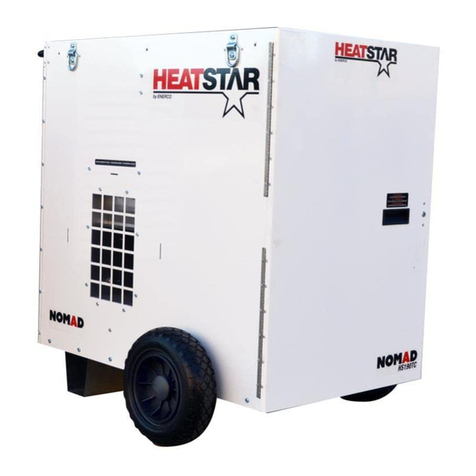
HeatStar
HeatStar HS115TC Operating instructions and owner's manual
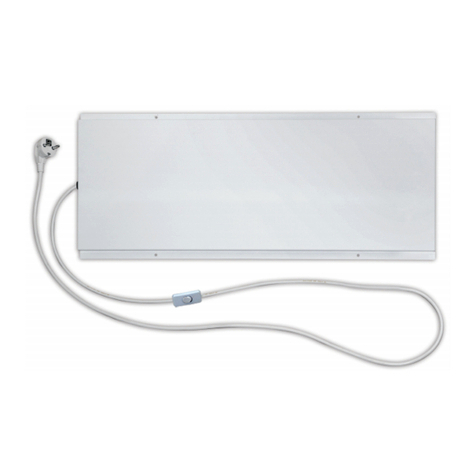
Etherma
Etherma LAVA DESK 120 Installation and usage instructions
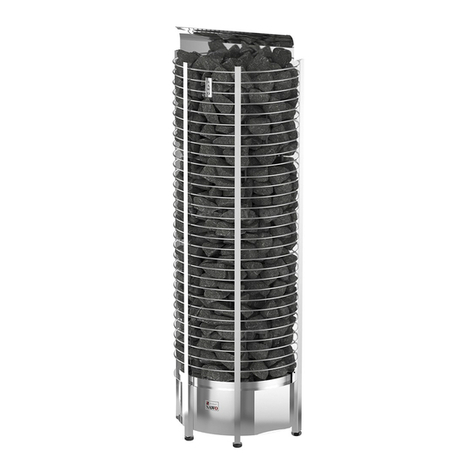
Sawo
Sawo TH2-30Ni2-WL manual

Olimpia splendid
Olimpia splendid Vapore Alogena Instructions for installation, use and maintenance
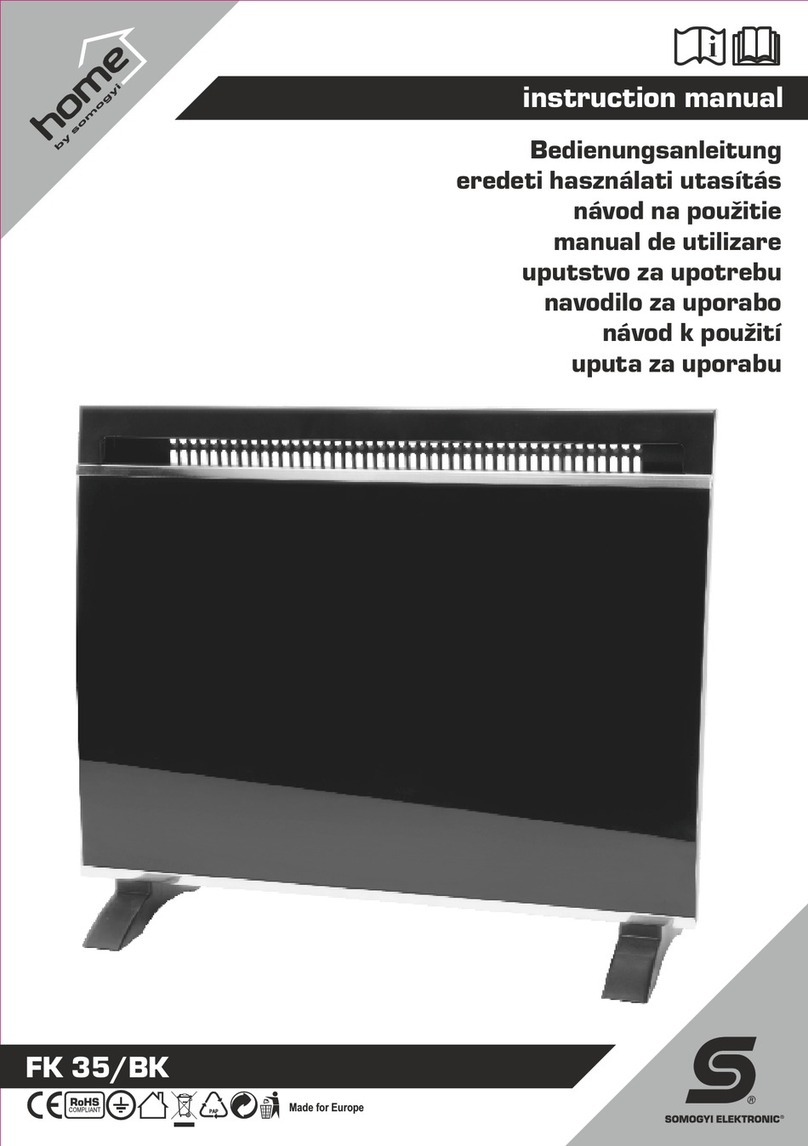
Somogyi
Somogyi home FK 35/BK instruction manual
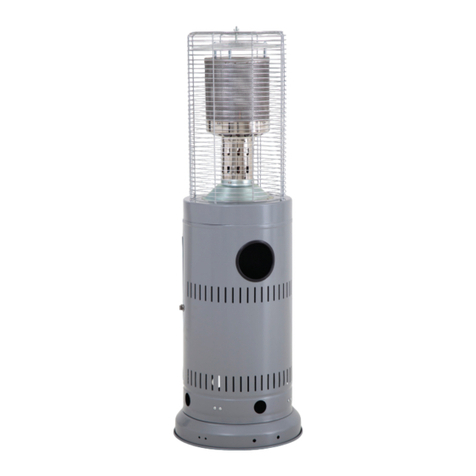
Gasmate
Gasmate AREA AH1063 Installation, operation and maintenance instructions
